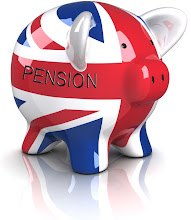As the equity markets rebounded sharply last year, savvy investors piled into that area of the market that had been hardest hit during the sell-off - smaller companies. Consequently, as risk aversion began to recede, smaller companies outperformed all other sectors of the market, returning their best one year performance since 1977 according to the latest research by London School of Economics professors Elroy Dimson and Paul Marsh.
The pair are responsible for creating the RBS Hoare Govett Smaller Companies index (HGSC), which covers the bottom 10 per cent by value of the UK stock market. The index has now been extended back to 1955 and also boasts various derivations - such as the HG1000, the smallest 1,000 stocks, and the HSGC plus Aim (Alternative Investment Market).
The absolute performance of the HGSC during 2009 saw a positive return of 54.2 per cent, better than all but five of the previous 54 years and beating the All-Share by 30 per cent. Even more impressive was the performance of the HG1000, which recorded growth of 60.5 per cent. This shows that the most significant outperformance during the year came from the lowest end of the market, indeed the FTSE Small Cap and Fledgling indices both outperformed the HGSC over 2009.
Fallen Angels rise from the ashes
What was notable was the strong rebound recorded by so-called fallen angels - those companies whose shares tumbled into the lower reaches of the equity market after a sustained period of poor performance. The HGSC started the year with 43 fallen angels, comprising 20 per cent of the index, and they produced total returns of 77 per cent. Compare this with the stocks that graduated upwards from the HGSC in the previous year, which added 19 per cent.
Further findings show that growth companies outperformed value stocks during 2009 and that a previously successful momentum trading strategy completely broke down during 2009. The 12/1/1 strategy, which involves ranking companies performance over 12 months, waiting one month then buying and holding for one month, would have resulted in an annual return of 24 per cent for those companies with the best performance. But buying a 'loser' portfolio, based on the worst-performing stocks, would have produced a 152 per cent return.
by: Graeme Davies
Subscribe to:
Post Comments (Atom)





No comments:
Post a Comment